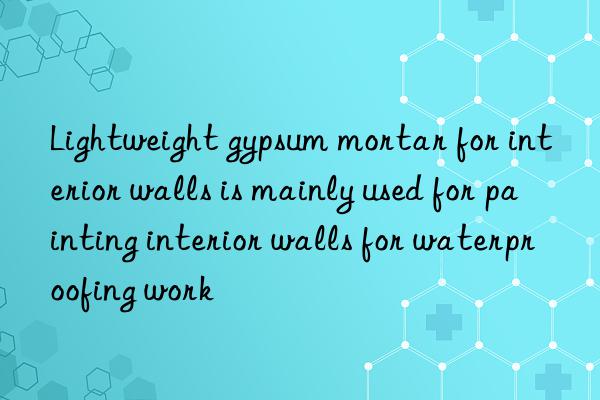
Lightweight gypsum mortar for interior walls is mainly used for interior wall coatings. Interior wall lightweight gypsum mortar is made of high molecular polymers and methylcellulose ether and other raw materials. It has the characteristics of good firmness, good bonding strength and good waterproof performance. It is suitable for high-end halls, conference centers and high-end places where water penetration needs to be prevented from affecting the exterior walls.
When plastering, lightweight gypsum mortar is a pneumatic plastering material that uses building gypsum as a base material and is mixed with sand. It overcomes common quality defects in plastering projects such as cracks and hollow drums. It can be widely used for indoor plastering of concrete walls, concrete walls, block walls and masonry, which improves the quality of the project and shortens the construction period.
Salt and calcium chloride must not be mixed into the plaster used to paint walls. Walls must be cleaned before plastering, and construction on frozen base layers is not allowed. Before plastering in the winter, doors and windows should be closed and insulated. Use heating measures for plastering in winter, and it is strictly forbidden to bake the wall directly.
When the plastering thickness is less than 0.05m, plastering mortar can be used directly. When the plastering thickness is greater than 0.05m, the light base layer can be directly used as the base layer, and then the surface layer is used for plastering. Spread light gypsum mortar on the base layer according to the designed thickness, then stick it on the standard rod with an H-type ruler and a scraper, and then scrape the mortar layer up and down. Use a trowel to smooth the finish, then use a ruler to check the flatness of the wall.
When the pigment sinks to the bottom, it can no longer be dispersed. During storage, the paint is not stirred or shaken sufficiently, the storage time is too long, or the temperature is too high. Improper dilution or dilution with unsuitable materials. To prevent the waterproof coating from settling, avoid excessive heat or long-term storage and store the waterproof coating according to the manufacturer's instructions. </p



 微信扫一扫打赏
微信扫一扫打赏
